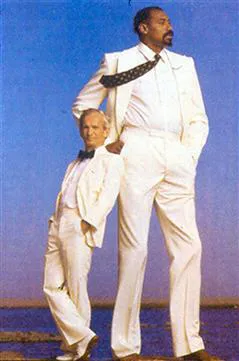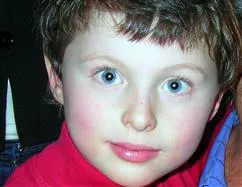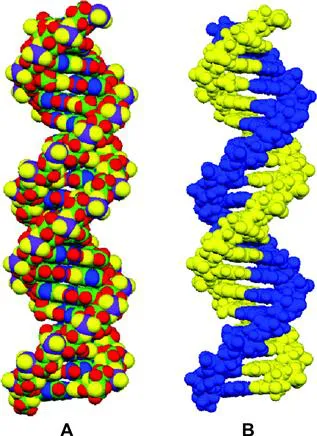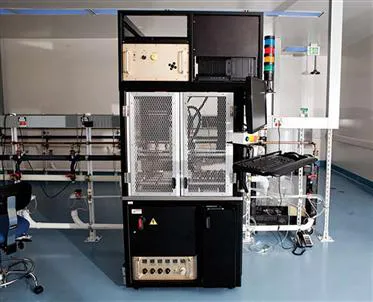![]()
PART 1
Introduction and Core Concepts
Chapter 1 Framing the Field
Chapter 2 Introducing the CORE CONCEPTS
Chapter 3 Genetics
Chapter 4 Growth, Development, and Reproduction
Chapter 5 Transmission of Genes
Chapter 6 Structure of Genes, Chromosomes, and Genomes
Chapter 7 Expression of Genes and Genomes
Chapter 8 Mutation
Chapter 9 Biological Evolution
Chapter 10 Human Individuality
![]()
Chapter 1
Framing the Field
Chapter Outline
Rationale for Studying Genetics and Genomics
Why Study Human Genetics and Genomics Now?
Divergent Public Reactions to the Field
Anticipated Returns on Educational Investment
Have you ever asked yourself questions such as these?
• Why are some people short, and others tall, and why are some children of tall parents short (Figure 1.1)?
FIGURE 1.1 Willie Shoemaker, a famous horse racing jockey, and Wilt Chamberlain, a famous NBA basketball player. Even though they dressed alike, their differences in height, weight, and skin color are discernable. Willy’s weight was under 100 lbs, and he was only 4 feet 11 inches tall, while Wilt’s weight was 275 lbs and he was 7 feet 1 inch tall. Multiple genes working together with the environment are responsible for all these differences, as well as some that are not as visible, such as susceptibility to disease.
• Why is red hair so much more common in the Scottish or Irish than in the Chinese or Japanese (Figure 1.2)?
FIGURE 1.2 This young woman has a relatively common variant of the gene that codes for a protein called the melanocortin 1 receptor. This causes her to have red hair, fair skin, and freckles.
• Is it true that a blue-eyed child must have two blue-eyed parents (Figure 1.3)?
FIGURE 1.3 A healthy blue-eyed boy whose parents both have blue eyes. Some blue-eyed people have brown-eyed or green-eyed parents.
• What does being a “carrier” for cystic fibrosis mean?
• Should all women be tested for genes that predispose to breast cancer?
• How does DNA “fingerprinting” exonerate people charged with murder?
• Is direct-to-consumer genetic testing valid and useful?
• What does the Genetic Information Nondiscrimination Act (GINA) prohibit?
• Why is the discipline of genetics so embroiled with societal controversies about stem cell research or the teaching of evolution?
These questions will be answered in this text. The science behind these answers is detailed, complex, and has important implications for laboratory research, clinical practice, and social issues.
Rationale for Studying Genetics and Genomics
In our view, it is incumbent on an educated person living in the 21st century to be familiar with the principles of science in general, and of genetics, in particular. We hold this view for many reasons. First, the study of genetics and genomics explores our biologic universe today in the same excitement-capturing way that astrophysics explored our physical universe yesterday. Rather than seeing stars and planets, geneticists see genes, genomes, cells, and organisms. Rather than landing men on the moon, geneticists now “walk” the human genome in search of landmarks. Rather than planning trips to Mars, geneticists contemplate the mystery of individual uniqueness, in scientific, not just philosophical, terms. In the nearly 60 years since Watson and Crick proposed the double helical structure of DNA (deoxyribonucleic acid) (Figures 1.4, 1.5), the molecule of heredity, wave after wave of discoveries have made genetics the most thrilling field in the sciences, perhaps in all human endeavors. And that is why an educated person must understand it.
FIGURE 1.4 Ball-and-stick models of the DNA double helix. The structural elegance is obvious; the details will be discussed in Chapter 6.
FIGURE 1.5 Looking down through the center of a model of DNA’s double helix. The details will be discussed in Chapter 6. The colors match those in Figures 1.4A.
Second, the study of the genomes of Homo sapiens and hundreds of other species has provided powerful—indeed incontrovertible—evidence for biological evolution from a common ancestor and for the mechanism of natural selection. It grounds the study of human origin and early migration, and reminds us that evolution is not “done,” but continues in us.
Third, there is much more than scientific excitement here. There is growing relevance to health, disease, and disability. Much of who we are, where we came from, and where we aregoing comes down to our genes and genomes. They define our biologic boundaries, or, to paraphrase Shakespeare, what our flesh is heir to. We will, increasingly, be able to use genetic information to make health-related decisions. Thus, awareness is a prerequisite for living a healthy life.
Why Study Human Genetics and Genomics Now?
The previous paragraphs offer a rationale for understanding genetics. But why now, and why human genetics? Without doubt, much that we know has been learned from bacteria, plants, yeast, flies, worms, and mice. Learning from these organisms will continue. Today, however, we can apply this fundamental information to humans and ask about humanness in all its complexity:
• about the relationship between the size of the human brain and the fraction of our genome expressed in it;
• about how our immune system wards off pathogenic organisms—even ones that we’ve not been exposed to before;
• about how normal traits are transmitted from parents to children;
• about why some traits cluster in certain populations, but not in others;
• about thousands of rare and common disorders resulting from deleterious mutations in our genes;
• about the value of and rationale for premarital, prenatal, and neonatal testing for genetic disorders;
• about genetic influences on beneficial and adverse responses to medications;
• about the benefits and risks of direct-to-consumer information concerning our own genome;
• about a near future when it will be possible to have one’s complete genome sequence determined for $1,000 or less using ever more sophisticated automated gene sequencing machines (Figure 1.6).
FIGURE 1.6 Automatic DNA sequencing machine. Its output must be linked to high-speed computer equipment. Machines like this one have lowered the cost of complete DNA sequencing in humans by more than 100,000 fold already, and will reduce the cost further.
Every one of these topics has moved out of the laboratory, the clinic, and the classroom to the public square. Not a day goes by without some mention of genes and genomes in print or on the Internet; in news media or on blogs; in movies or on television. Distinguishing fact from fiction (or fantasy), or telling the difference between understanding and misunderstanding, requires a frame of reference and some knowledge of terms and concepts.
INTERSECTIONS: BIOETHICS
The Unfortunate Misuse of Human Genetics
The smallest genetic differences among people, real or imagined, can sometimes lead to tragic actions. The conflict between the Tutsi and Hutu people of the country of Rwanda in central Africa illustrates this. Recent genetic studies indicate that a close ethnic kinship exists between these two tribes, generations of gene flow obliterating any clear-cut physical or genetic differences between them.
When the Belgian government and its colonial power seized control of Rwanda in 1916, they created a strict system of racial classification, dividing the previously unified population and putting one group (Tutsi) above the other (Hutu). Conducting a census, the colonialists classified the people throughout Rwanda based on a phenotypic (observable characteristics) scheme. This classification was based on nothing more than the size of the nose, color of the eyes, and height. People with a longer nose, lighter eyes, and greater height were said to be Tutsi. They were given positions of greater authority and opportunity, as well as favorable land possession. The result of splitting the population of Tutsis and Hutus in this way was a conflict between the different groups, particularly in 1994, that has lasted into the 21st century, resulting in the deaths of hundreds of thousands of people. That the horr...






